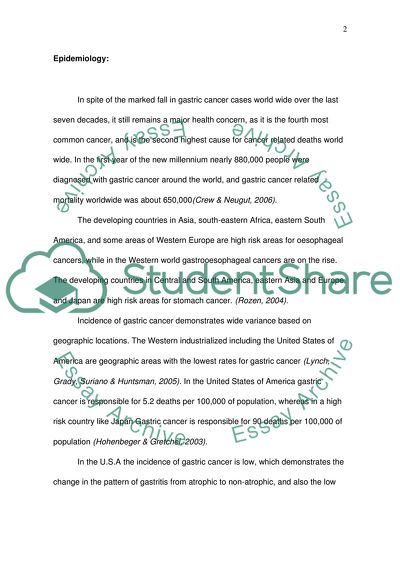Cite this document
(Gastric Cancer Prevention Essay Example | Topics and Well Written Essays - 1500 words, n.d.)
Gastric Cancer Prevention Essay Example | Topics and Well Written Essays - 1500 words. https://studentshare.org/health-sciences-medicine/1540364-gastric-cancer-prevention-importance-of-mass-and-high-risk-screening-in-the-face-of-demographic-changes-in-the-us
Gastric Cancer Prevention Essay Example | Topics and Well Written Essays - 1500 words. https://studentshare.org/health-sciences-medicine/1540364-gastric-cancer-prevention-importance-of-mass-and-high-risk-screening-in-the-face-of-demographic-changes-in-the-us
(Gastric Cancer Prevention Essay Example | Topics and Well Written Essays - 1500 Words)
Gastric Cancer Prevention Essay Example | Topics and Well Written Essays - 1500 Words. https://studentshare.org/health-sciences-medicine/1540364-gastric-cancer-prevention-importance-of-mass-and-high-risk-screening-in-the-face-of-demographic-changes-in-the-us.
Gastric Cancer Prevention Essay Example | Topics and Well Written Essays - 1500 Words. https://studentshare.org/health-sciences-medicine/1540364-gastric-cancer-prevention-importance-of-mass-and-high-risk-screening-in-the-face-of-demographic-changes-in-the-us.
“Gastric Cancer Prevention Essay Example | Topics and Well Written Essays - 1500 Words”. https://studentshare.org/health-sciences-medicine/1540364-gastric-cancer-prevention-importance-of-mass-and-high-risk-screening-in-the-face-of-demographic-changes-in-the-us.


